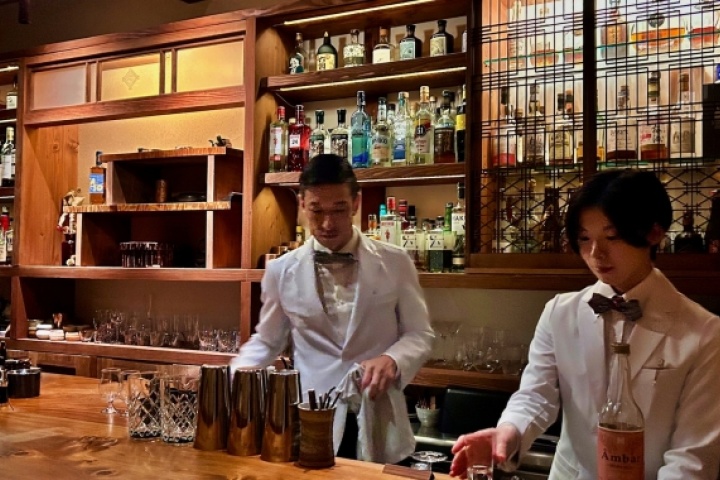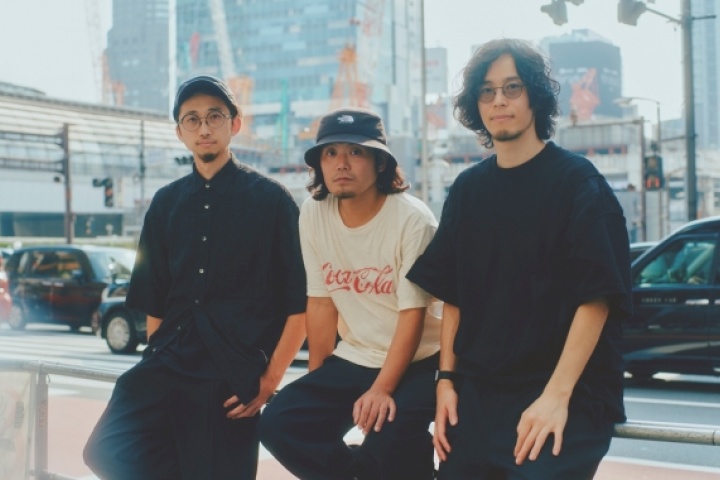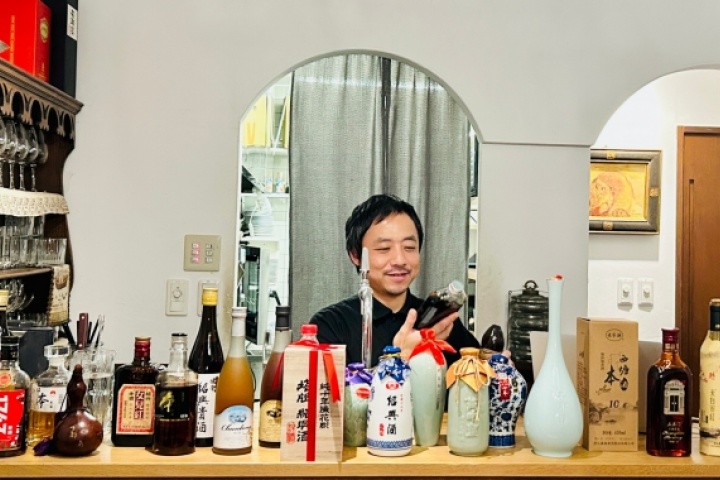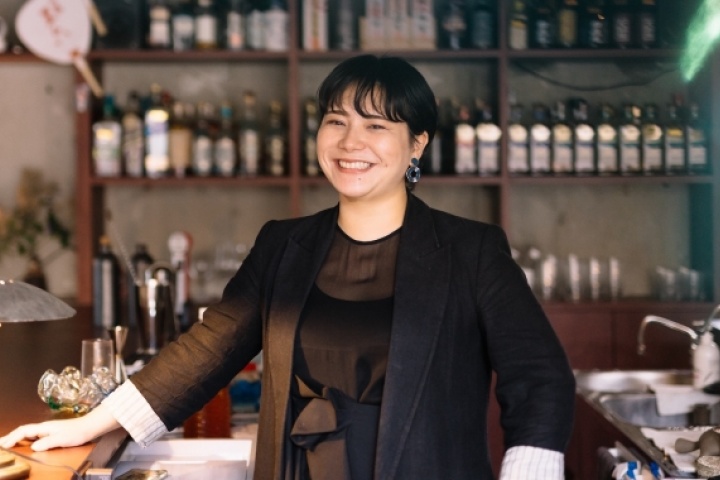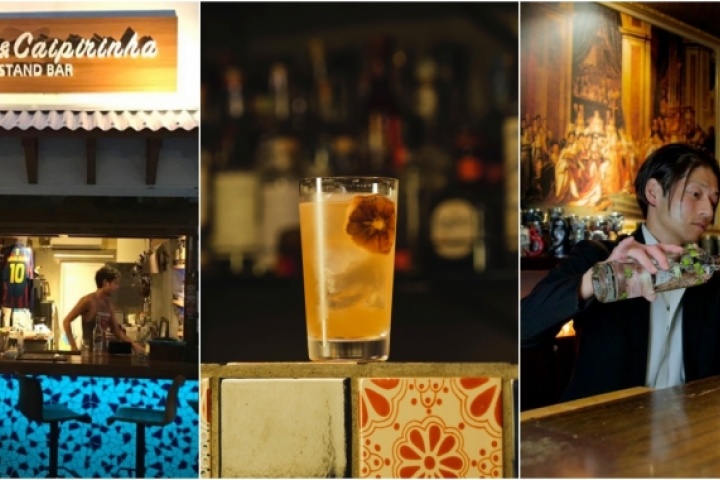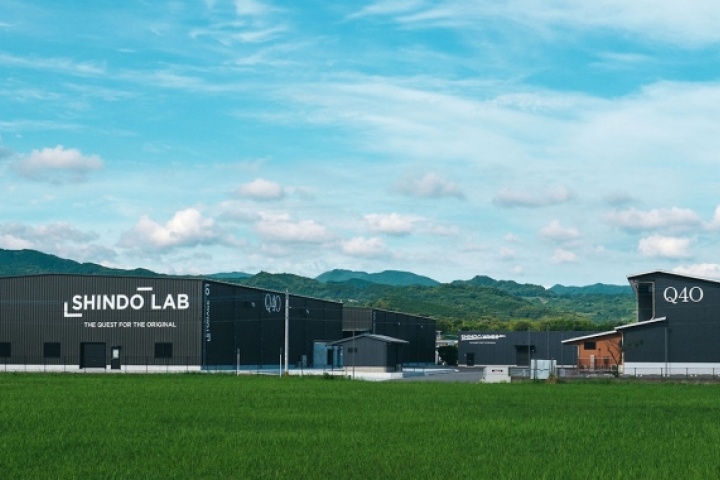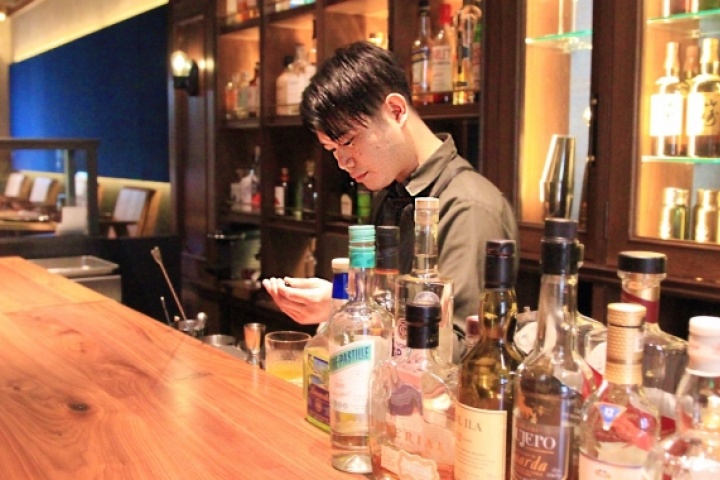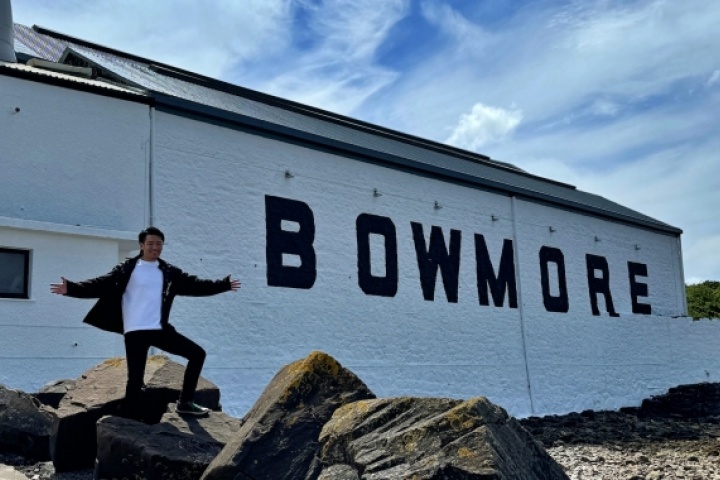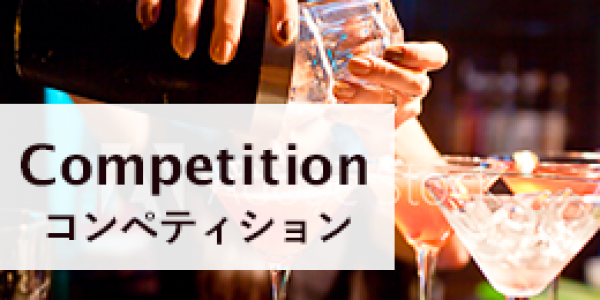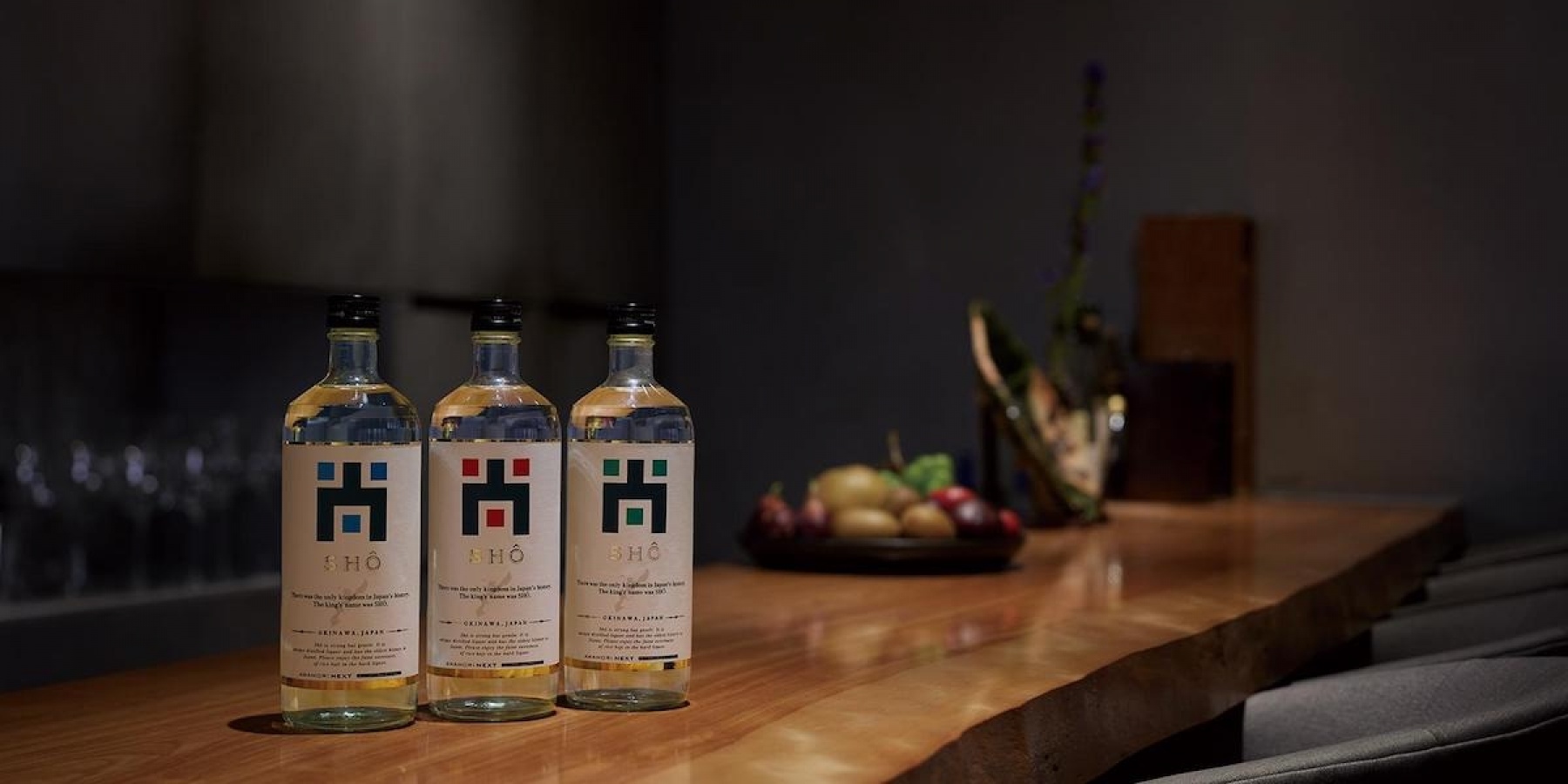
PICK UP
Bringing Awamori to the global bar scene.
The birth of Japanese hard liquor in Okinawa.
<Part 1>
#Pick up
伊藝壱明さん from「Zuisen Distillery Co., Ltd.」
writer:Ryoko Kuraishi
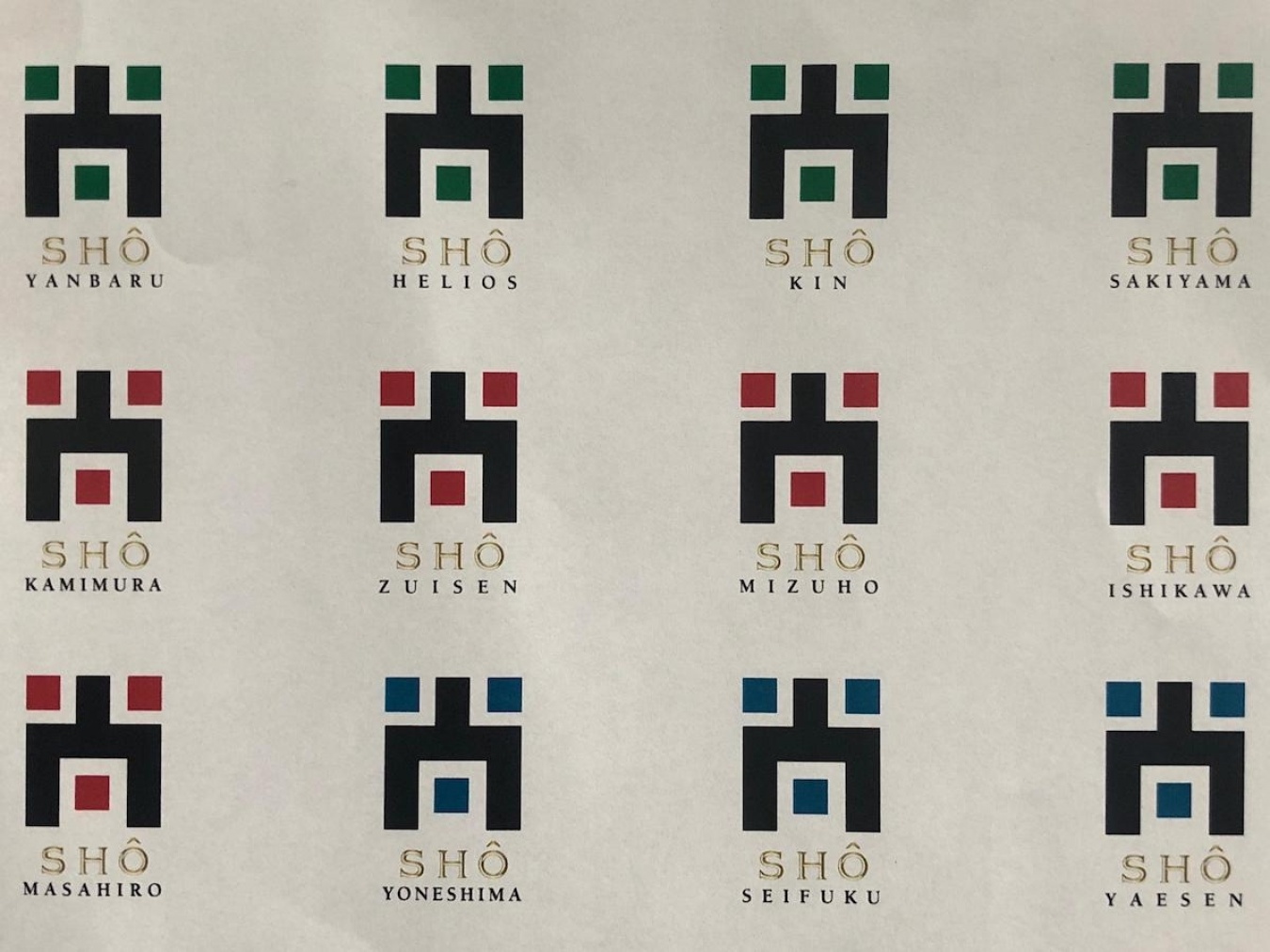
Sho was jointly developed by 12 companies, including Mizuho Brewery, Ishikawa Brewery, Masahiro Brewery and Zuisen Brewery, Yanbaru Brewery, Helios Brewery, Kinshuzo, Sakiyama Brewery, Kamimura Brewery, Yonejima Brewery, Koefuku Brewery and Yaezumi Brewery.The colours of the logo represent the location of each distillery.The northern part of the main island is forest green, the central and southern parts are the red of Shurijo Castle, and the remote islands are the blue of the sea.
Awamori at the bar.We want to build such a scene.
Sho, which was just unveiled this month, is a new generation of awamori developed jointly by 12 awamori manufacturers in Okinawa Prefecture.
Awamori is made from rice, the starch is saccharified by rice malt, the alcohol is fermented by yeast and the mash is distilled only once.
Awamori is made from rice malt alone, and was started with the belief that Awamori is a Japanese spirit nurtured by the rice culture, and that it can be used worldwide as a white spirit.
Here is some background on the project.
Igei Imei, who works in the production department at Zuisen Brewery, says: "This project is about rethinking Awamori from the perspective of hard liquor, and at first we didn't plan to go as far as product development.

Zuisen Brewery was founded in 1887.One of the breweries that led the 'Sho' project.
'It all started when a group of volunteer makers started a study group on Awamori in response to the downturn in the Awamori industry over the past few years.
In fact, as brewers ourselves, we only had the perception that Awamori was a local drink.
With the perception of Awamori as a local liquor, it will not spread beyond Okinawa.
So we felt it was necessary to rethink Awamori from a broader perspective of hard liquor and spirits.
In 2009, the Okinawa Brewers Association started a project to train personnel who can objectively assess Awamori's quality and also market it.In 2009, the Okinawa Brewers Association started a project to train personnel who can both objectively assess the quality of Awamori and market it.
Prior to this, the Okinawa National Taxation Office, the Okinawa Prefectural Industrial Technology Centre, the University of the Ryukyus and the Okinawa National College of Technology had jointly developed the 'Awamori Flavour Wheel', a collection of flavour terms.
This is based on scientific knowledge and organises expressions of the aromas and tastes that can be perceived in Awamori, with the aim of visualising the quality of the drink.
The 49 expressions, including fruit, nut, vanilla and oily, were listed, but in order to use them to objectively evaluate awamori in the first place, taste and smell training and marketing skills were also required.
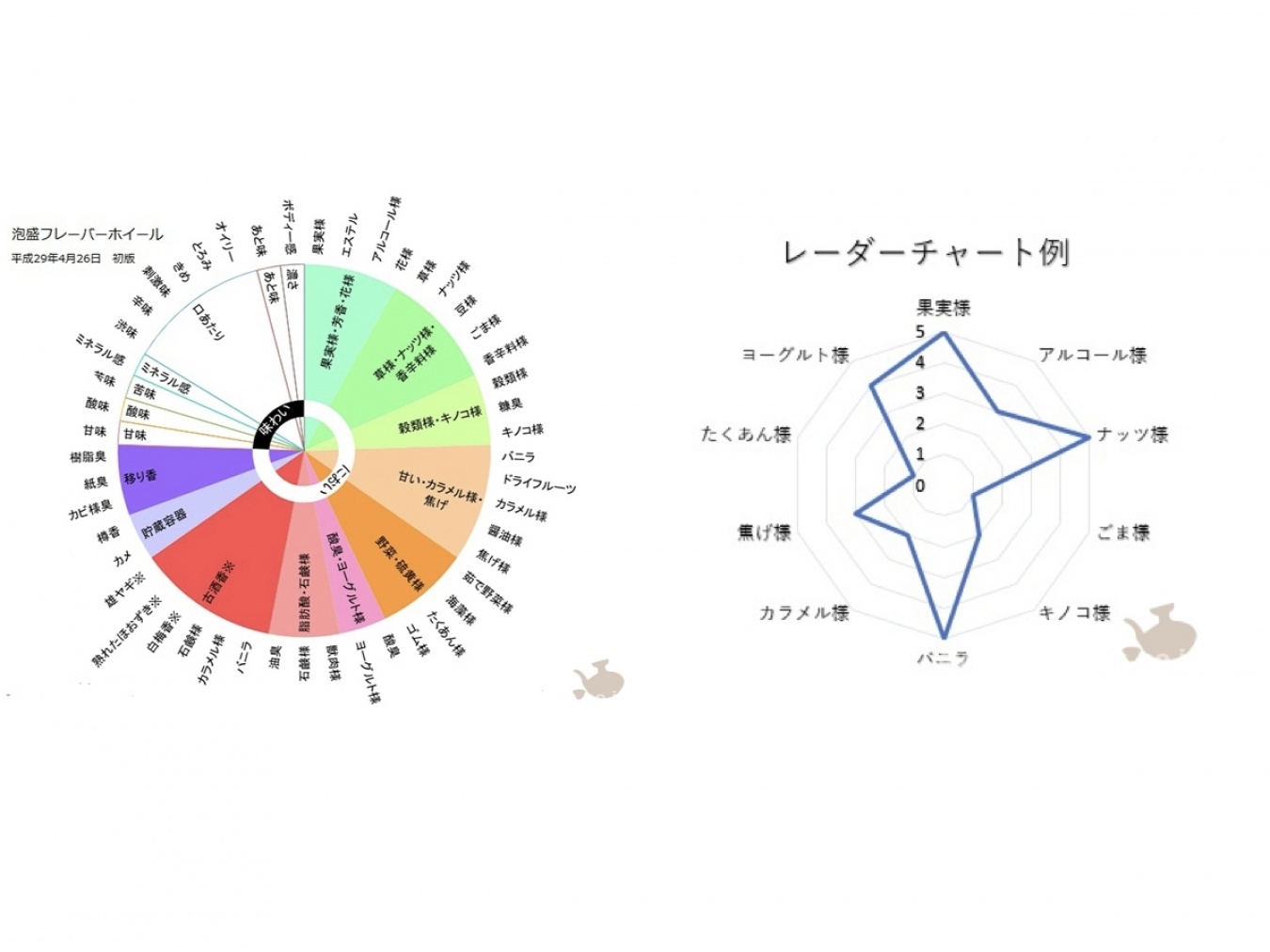
On the left is the Awamori Flavour Wheel.This is used to describe the quality of the awamori liquor.It was then compiled and evaluated in the form shown on the right.
Igei was one of the participants in this project.
'After two years of training, I thought it would be possible to re-evaluate Awamori within the category of other hard liquors and spirits.'
So, when Awamori is considered as a white spiritWe then put the strengths and weaknesses of Awamori as a white spirit into data and compared it with other spirits.
The evaluation was to be reproduced as a product.
'Awamori is characterised by its rice-derived sweetness and sweet aroma.
When it comes to white spirits, clean mouthfeel and sharpness are generally preferred, so the unique oily, turtle aroma and pungent sensation from the storage container of Awamori may not match the aroma of the rice.
So we decided to try to create a clean-mouthed Awamori by removing the oily taste while retaining the sweet flavour and aroma unique to rice."
InitiallyAt first, he tried to create the desired quality by blending the original sake, but it just didn't work.
So, finally, they decided to start distilling.
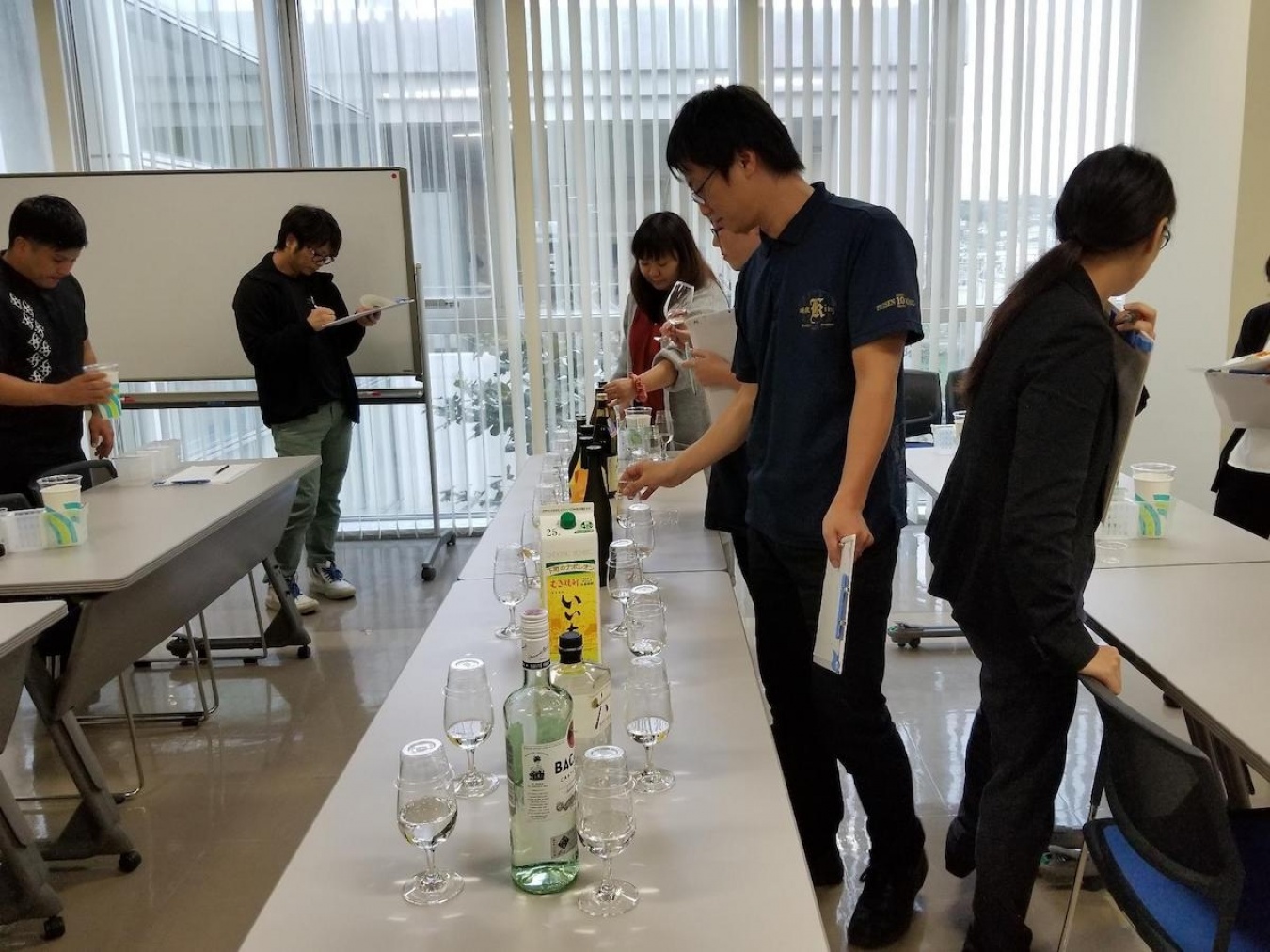
The Sho project started with an analysis of the world's white spirits and an objective understanding of Awamori's position.
Unprecedented 'triple distilled' Awamori.
'Normally, we don't distil more than one bubbly with an alcohol content of more than 50° C in one distillation.
But in this project, we wanted to create a clean and crisp mouthfeel that is typical of white spirits, so we decided to use a new method of distilling three times.
The distillation process makes certain flavours and sharpness stand out.
The third distillation is cut, as with whisky, while tasting with an eye to the flavour we are aiming for.
This is how the first sample was made.
The first sample was the result, which made us think that 'Awamori is the original Japanese hard liquor'.
Initially, four companies - Mizuho Brewery, Ishikawa Brewery, Masahiro Brewery and Zuisen Brewery - were involved in product development, but they asked other companies with facilities capable of triple distillation to join them, and the project became a joint development by a total of 12 companies.
The first sample produced a completely different quality of Awamori from what we had previously produced, so we thought we could create a completely new category and scene for Awamori.
Then it would need to be an industry-wide effort, so I wanted to involve as many manufacturers as possible."
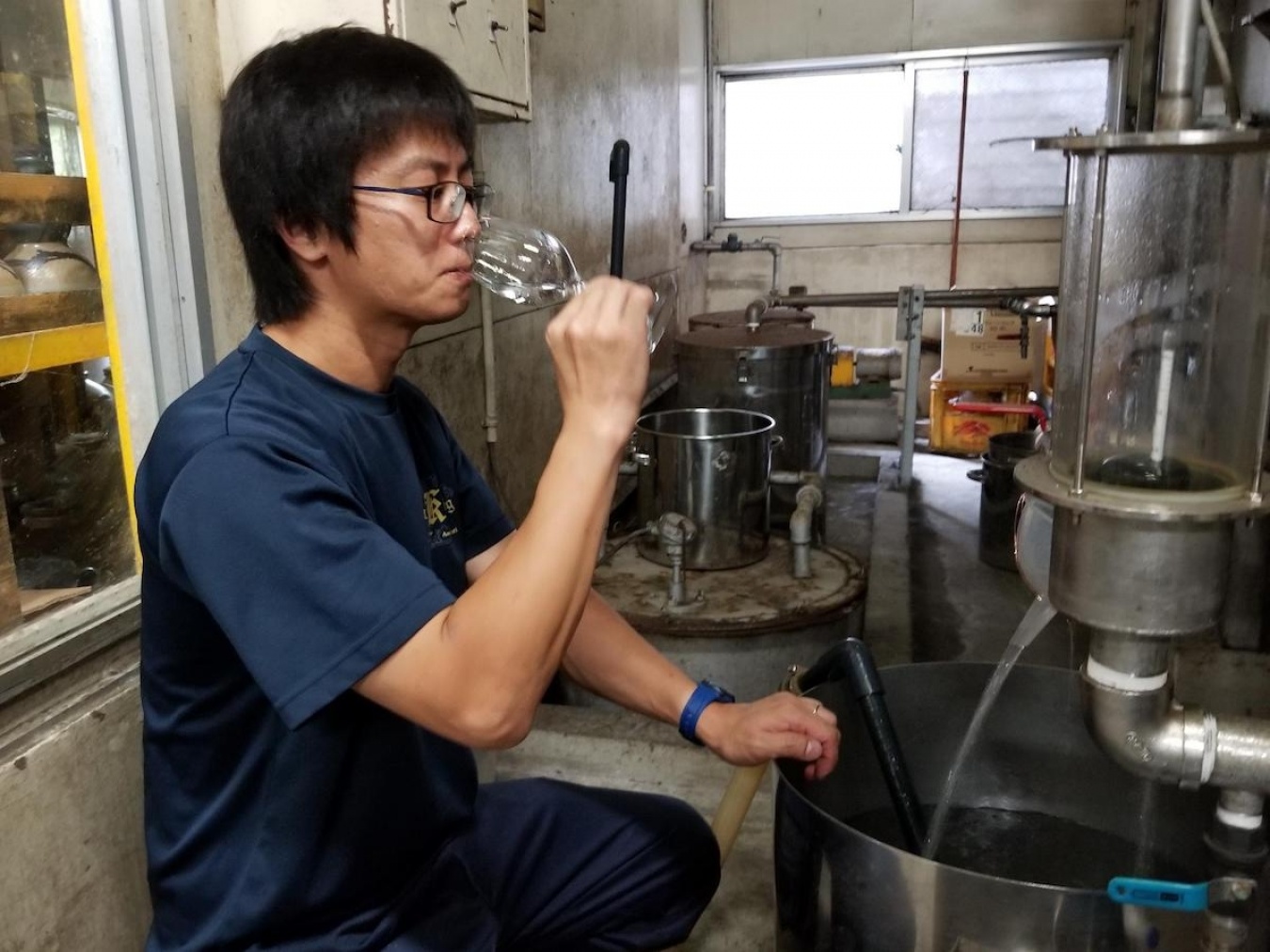
By incorporating triple distillation, which is unprecedented in Awamori, the cleanliness and sharpness of the mouthfeel are highlighted.
What is interesting is that although the same brand of awamori is made using exactly the same process and with the same alcohol content, each has a different taste and character.
According to Igei, this is the result of the multiple distillation process, which makes each company's individuality stand out.
The distillation process is based on detailed rules, but there are differences not only in the equipment, such as the shape of the distillation equipment, but also in the tasters (who do the cutting).
To begin with, Awamori is distilled from 100% rice malt, so the taste differs even if the malt used is different.
This is how Awamori, a Japanese hard liquor, was completed.
The scene we are aiming for is, of course, the bar.......?
The second part of this article discusses the potential of awamori in bars.
Continued in Part 2.
SHOP INFORMATION
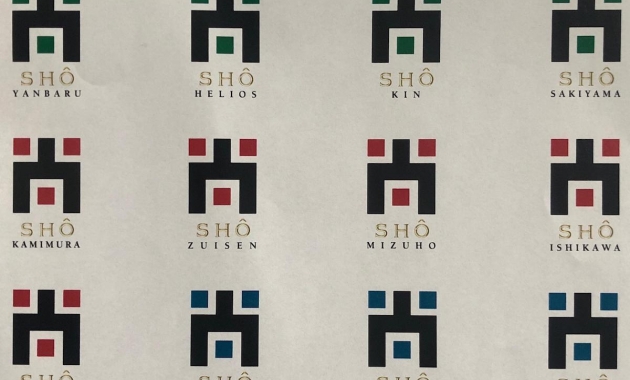
|
 |
|---|---|
| Zuisen Distillery Co., Ltd. 瑞泉酒造株式会社 |
|
|
1-35 Shurisakiyama-cho, Naha-shi, Okinawa TEL:098-884-1968 URL:https://www.zuisen.co.jp |
- Drink Planet >
- PICK UP >
- Bringing Awamori to the global bar scene.
The birth of Japanese hard liquor in Okinawa.
<Part 1>
![[Drink Planet] Cocktail portal site for bartenders](/img/common/logo.png)
![[Drink Planet] Cocktail portal site for bartenders](/img/common/logo-l.png)

